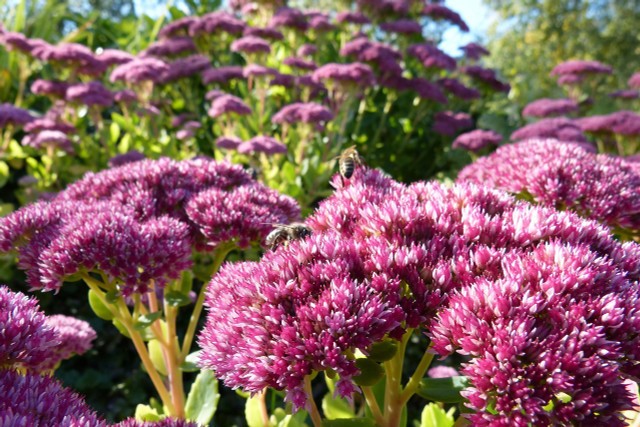The fat hen is a rather undemanding, but beautifully flowering shrub. We’ll show you what you need to know to make the plant thrive in your home, too.
Admittedly: Fat hen doesn’t actually sound like a shrub, but rather an animal. But it’s actually a beautiful flowering shrub that’s quite easy to care for.
Contents
How to plant and care for the fat hen
Fat hen needs a sunny location to thrive – it doesn’t mind heat. You can plant it well in rock gardens or beds, but also in a pot on the patio. Make sure the soil is sandy and dry, and doesn’t contain too many nutrients.
To plant them, you need to cut out planting holes about one and a half times the size of the Fat Hen’s root ball. The planting distance varies slightly depending on the subspecies, so it’s best to find out about this right where you buy the plants.
Overall, the shrub doesn’t need much care and is very hardy. You only need to water it a little when it’s hot and only when the soil is completely dry. Even in winter, the soil should be dry. If you water it then, low-lime rainwater is ideal. Read more here: Rainwater harvesting: how to save precious drinking water.
Pruning and wintering the fat hen

Some varieties grow up to 60 inches tall, so you’ll need to prune the Fat Hen back regularly. Here’s how:
- The right time to cut back Fat Hen is spring. Then the stems with the flowers have dried out and can be shortened.
- Cut off bare and woody parts of the plant just above the ground. This will rejuvenate the Fat Hen and allow it to sprout again.
- Shorten shoots that are too long by up to two-thirds.
- Fat hen is hardy in the bed. With a few tricks you can also bring potted plants through the winter: Place the plant on a small wooden board or Styrofoam sheet. Against a warming house wall and protected from rain, the fat hen will find ideal overwintering conditions.
Propagate fat hen

This is how you help the Fat Hen to multiply:
- Harvest the small fruits of the fat hen in the fall. They contain seeds that you can use for sowing.
- Store the seeds in a dry place over the winter.
- As soon as the ground becomes frost-free in spring (April is a good time), you can start sowing: Spread the seeds generously over the bed. Choose a bright location for this. The fat hen is a so-called light germinator, which means that you should not cover the seeds with soil. Instead, water them lightly so that they are not blown away by the wind.
- From temperatures around 20 degrees, the seeds should quickly develop into small plants.
- If the plants are too close together, you should pull some of them out so that the others can develop sufficiently.

